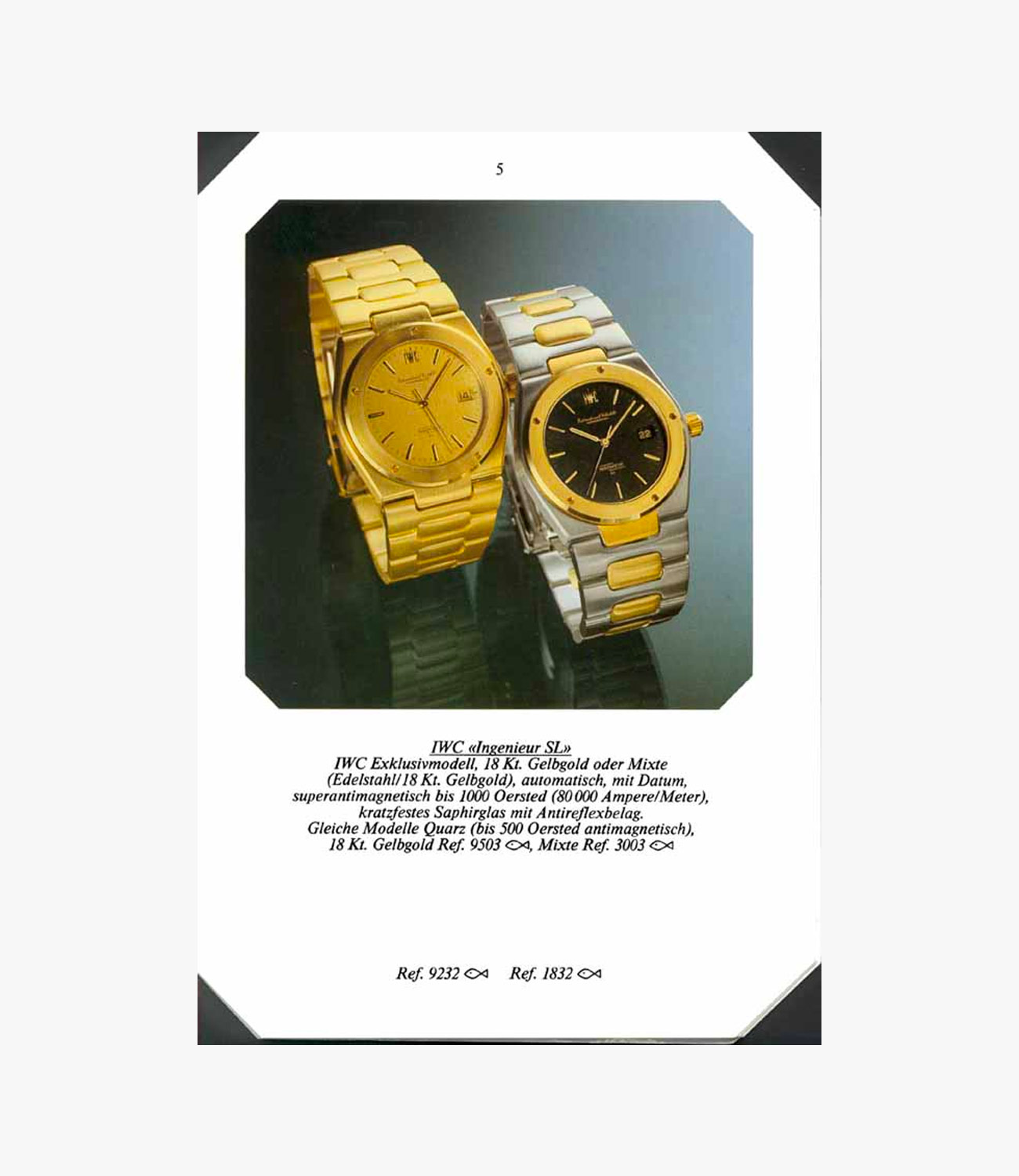Welcome to Watches You Should Know, a biweekly column highlighting important or little-known watches with interesting backstories and unexpected influence. This week: the IWC Ingenieur.
It began its life as a classical-looking timepiece notable for its resistance to magnetic fields. That might not sound particularly sexy, but the IWC Ingenieur would go on to rival some of the most iconic watches of all time, beating the technically comparable Rolex Milgauss to market, and decades later, reimagined as a sibling of Gerald Genta’s prestigious Royal Oak and Nautilus sport watches. No matter how you feel about it, this watch deserves a closer look.
The IWC Ingenieur ref. 666 was introduced in 1955 as a watch for scientists and engineers, and there wasn’t much about its looks that would tell you it was radically different from other elegantly styled watches of the time. Two elements, however, hinted at its uniqueness: the “Ingenieur” logo on the dial that incorporated an arrow reminiscent of a lightning bolt, and its size.
At around 37mm, the Ingenieur was considered large for its time, and this was in part due to a unique feature found inside its case. While other companies had tried various methods of protecting movements from magnetic fields, IWC used a non-ferrous, soft iron shield around the movement within the case. The brand had previously used the same tech in its Mark XI watch for pilots who relied on accurate timekeeping for navigation and were exposed to significant magnetism in the cockpit.

This solution meant the Ingenieur was able to withstand a significant level of magnetism: 1,000 gauss, to be specific. Upon its introduction, it was marketed to scientists (Ingenieur is German for “engineer”) whose work involved equipment that could magnetize a watch. And while the Ingenieur didn’t make a huge initial splash, it preceded the 1956 Rolex Milgauss (“1,000 gauss”) and the similarly antimagnetic 1957 Omega Railmaster.
The Ingenieur received some subtle upgrades over the subsequent years, but the 1970s brought radical changes across the watch industry, from technology to design. In the hands of Royal Oak creator Gerald Genta, the 1976 Ingenieur (ref. 1832) went from a conservatively styled watch for professionals to a bold sport watch. (This was the same year that Genta gave the world the Patek Philippe Nautilus with its lifestyle-oriented sport watch concept.)
The Ingenieur got the same integrated bracelet treatment as the Royal Oak and Nautilus, as well as a distinctive bezel with five visible screw holes. It even had a true sport-watch water resistance of 120m. This aesthetic would form the basis of the Ingenieur for many years to come, and ultimately establish a collection including a range of iterations and complications.
The current Ingenieur collection (as of 2020), however, more closely references the conservative looks of the earliest models and no longer emphasizes magnetic resistance. IWC seems to be sitting on plenty of potential for upgraded design, as so many brands have tried to replicate the Genta juju with lifestyle sport watches lately, from A. Lange & Söhne with the Odysseus to Vacheron Constantin with its Overseas to Chopard with the Alpine Eagle and Bell & Ross with its BR05… and quite a few more.
IWC is one of the only brands, however, that has the claim to a true Genta design of this style with proven success — even if it never reached the status of the Royal Oak or Nautilus. What could be more compelling in today’s market than a thoughtful take on the Genta Ingenieur? With one of IWC’s in-house movements (current time-only Ingenieurs use Sellita-based calibers) and perhaps some silicon parts to give it real antimagnetic cred, it’d be an easy win. In the meantime, vintage Ingenieur models hold plenty of interest and value.

